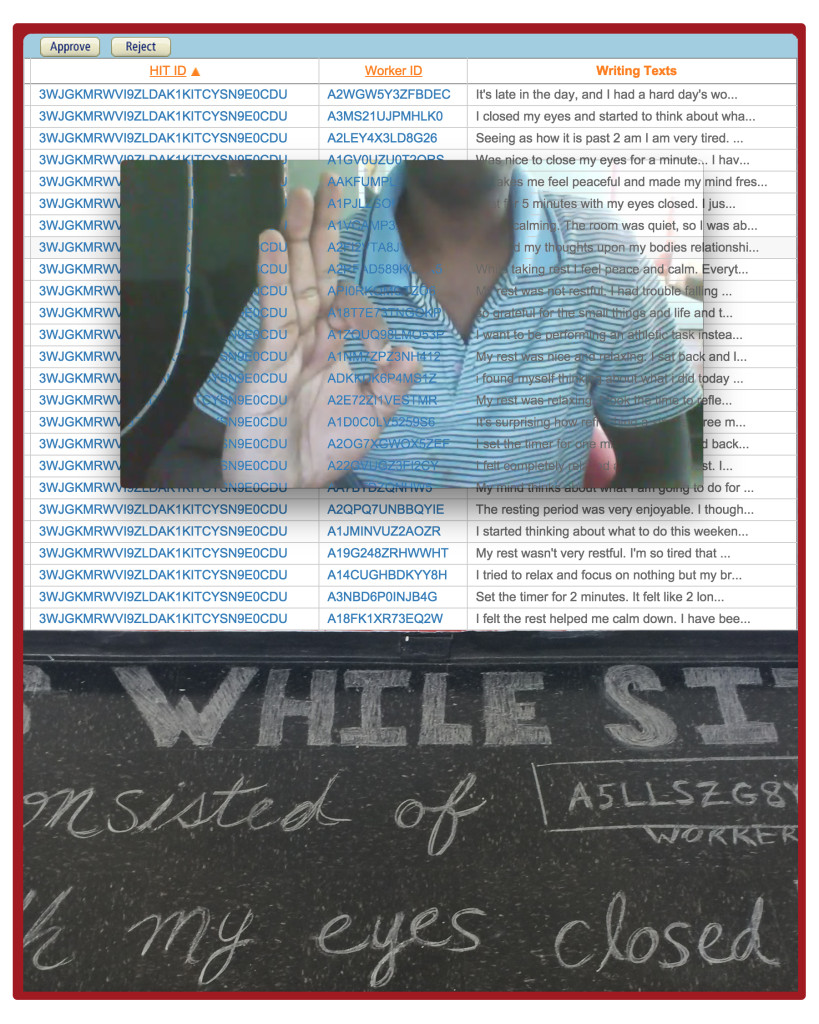 On May 2nd from 7-10pm I hope you will join me at Grand Central Art Center (Santa Ana, CA) in the Project Room for my opening of Mediations on Digital Labor.
On May 2nd from 7-10pm I hope you will join me at Grand Central Art Center (Santa Ana, CA) in the Project Room for my opening of Mediations on Digital Labor.
The exhibitions statement follows:
Mediations on Digital Labor began with a hijacking of the Amazon.com Mechanical Turk website (Murk.com) for a critical, poetic, and alternative practice: Artist xtine burrough hired the Turkers to pause from physical labor.
As a play on the Mturk model, for which an industrial-sized, global workforce is paid less than minimum wage to work in untraced conditions, earning “rewards” paid on Amazon.com gift cards, the artist offered her set of workers 25 cents to break from labor for up to five minutes. She instructed the rested workers to describe their experience in 10-100 words. Trebor Scholz uses the word “playbor” (as in play/labor) to identify the tension between digital work and play that takes place not just on sites like Mturk.com but in all facets of online pseudo-participation. Scholz writes that in digital culture, “It has become increasingly difficult to distinguish between play, consumption and production, life and work, labor and non-labor.”
When more than 50 Turkers took burrough up on her alternative job she imagined the international group sitting together, respecting each other in silence. Though it is impossible to target a single worker, or a group of workers, for employment on Mturk.com she posted another “HIT” (Amazon’s word for “job” is “human intelligence task” or HIT) requesting a 10-second video of the worker chanting the word “Om,” for which she paid 75 cents per video and received nearly 30 responses. These videos became the pool of digital data stored on the jump-drives hanging from the Grand Central Art Center Project Room’s walls. Each digital container has one file, a single disembodied “Om” chant from a virtual worker. The workforce extends from the USA to India, and these chants are in various mother tongues. One of them was made electronically, the computer itself speak/chanting “Om.” Some of the videos include an image. Many are black or some variation on pink or red, the color made when a video-maker’s finger is pressed against the camera lens to conceal her identity.
On the floor of the gallery burrough has spent time in silence drawing out the Turkers’ feedback in chalk. Presented here is a small selection of the data, on her hard drive there is more than she could fit on the floor. Burrough chose the texts that resonate with her own experiences with intentional resting, or meditation. As viewers step into the gallery her chalk letters are unencrypted, analog data for human participants that morphs and erodes. Viewers are encouraged to participate: Reach for the sky to select a (now recycled) recording of the Om chant, or sit on the ground and rest. Use the chalk provided to add your feedback. What was it like to rest, intentionally, for a couple of minutes? How did you feel before and after your rest?
Like Scholz’s gray space between play and labor, this collection of digital chants, compiled from a virtual job board, showcases the voices of disembodied strangers making a sound that can accompany one’s return to her body at a vibrational frequency found throughout the natural world.